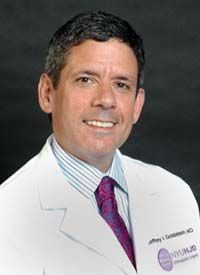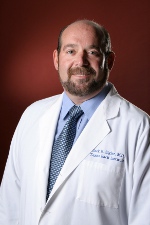 Several factors impact access to spine care. As the aging population increases along with life expectancy, the medical field will see a diminishing number of back pain specialists and spine surgeons to care for patients. Coupled with declining reimbursements and coverage denials, spine conditions and diseases place a heavy burden on society.
Several factors impact access to spine care. As the aging population increases along with life expectancy, the medical field will see a diminishing number of back pain specialists and spine surgeons to care for patients. Coupled with declining reimbursements and coverage denials, spine conditions and diseases place a heavy burden on society.
"There are $130 billion of indirect costs of spine care, and $50 billion in direct costs annually, which are huge numbers," says John Finkenberg, MD, a spine surgeon in private practice with Alvarado Orthopedic Medical Group in San Diego and Advocacy Chair for the North American Spine Society. "Those numbers are in addition to the fact that 10,000 people will turn 65 years old every day over the next 18 years, which sets up the scenario that there will be a significant increase in patients who need to be seen and cared for. There is going to be a shortage of physicians and healthcare resources as a result."
Here are the biggest access to care issues facing spine patients today and how spine surgeons and specialists can overcome these challenges in the future.
1. Growing population needing spine care with fewer specialists in training. According to some projections, by 2020 among the groups with the largest influx of patients will be orthopedics and ophthalmology. A physician shortage of 130,000 is expected by 2025 according to projections from the Association of American Medical Colleges, which will have a serious impact on patient access to care. Surgeons are looking for new tactics to maximize clinic hours and see more patients during the day.
"Spine surgeons are becoming more efficient in their practices," says Jack Zigler, MD, a spine surgeon with Texas Back Institute in Plano. "Better screening tools are available for patient use, including e-mail access to the practice to determine if they even need to see a surgeon, computer portals to streamline the clinic entry process and video explanations of surgical procedures and their risk."
Many professional societies are supporting two legislative acts to increase the number of medical students able to train in orthopedics and spine over the next few years. HR1180, the "Resident Physician Shortage Reduction Act" and HR 1201, the "Training Tomorrow's Doctors Today Act," were brought in front of the House of Representatives and are designed to increase the number of graduate medical education spots, creating 15,000 more residency positions, over the next five years.
"They will be directing half of the physicians to training in shortage specialties," says Dr. Finkenberg. "The Act also specifies priorities for states with shortages in those specialties and states that have put money into new medical schools. We will have the ability to study where the U.S. healthcare system is going and allocate the resident positions accordingly."
2. Coverage denials from insurance companies. Spine surgeons are beginning to see coverage denials for treatment that would have been reimbursed in the past as insurance companies develop new guidelines and requirements for surgical care. Some surgeons are finding unique partners in hospital administrators to promote coverage for appropriate care.
"There is a trend by physicians to increase their relationships with hospitals who are in good position to promote insurance participation," says Jeffrey A. Goldstein, MD, clinical professor of orthopedic surgery and director of spine service at Hospital for Joint Disease at NYU Langone Medical Center and member of the board of directors for the International Society for the Advancement of Spine Surgery. "As increased numbers of providers choose to participate in private insurance programs, access increases. Additionally, surgeons have become better at providing data to carriers that establishes the benefits of spine surgery and demonstrates positive outcomes."
service at Hospital for Joint Disease at NYU Langone Medical Center and member of the board of directors for the International Society for the Advancement of Spine Surgery. "As increased numbers of providers choose to participate in private insurance programs, access increases. Additionally, surgeons have become better at providing data to carriers that establishes the benefits of spine surgery and demonstrates positive outcomes."
Professional spine societies are also advocating insurance companies to cover appropriately indicated spine surgeries and sharing outcomes among spine surgeons.
3. Increased patient volume from the individual mandate. As more patients enter the healthcare system under the Patient Protection and Affordable Care Act's health insurance exchanges, spine surgeons and specialists will likely see an immediate increase in patient volume.
"Spine surgeons are starting to look at physician extenders such as physician assistants, registered nurses, nurse anesthetists and other advanced practitioners to conduct an initial visit with the patient," says Dr. Finkenberg. "Physician extenders can direct patients to the appropriate specialist based on whether non-surgical or surgical treatment would be best."
Other physicians are changing their practice to spend more time in the clinic and less time at the hospital with post-surgical patient rounding, which can be done by other staff members. Some have decided not to participate in emergency care and take on fewer administrative responsibilities.
"This allows surgeons to see more patients in the office setting," says Dr. Finkenberg. "We don't know whether this is a good or bad trend yet because we haven't seen a scenario quite like this before."
4. More administrative demands. Surgeons must spend more time on patient documentation than in the past, which means surgeons must make changes in order for all spine cases to fit into the schedule in a timely manner.
"In the operating room, newer less invasive techniques allow surgery to be performed more efficiently," says Dr. Zigler. "Appropriate use of newer technologies (navigation, biologics, motion preservation) in the hands of better-trained surgeons allows patients to have procedures performed earlier in the course, enjoy quicker recovery and experience fewer complications."
Healthcare providers have also implemented electronic medical records, designed to ultimately speed the process of data entry and sharing. Many EMR have been designed for primary care physicians and are now being recreated with the specialists in mind.
"The growing pains around EMR have been monumental," says Dr. Finkenberg. "Over the next five years, the administrative burden will be difficult but once the EMR are in place and the systems are able to talk to one another and share medical information, we'll spend less time on administrative issues and more time with patient care."
5. Lower Medicare, private payer rates leave solo practitioners behind. Solo practitioners in many specialties have joined larger practice organizations or become hospital employed because reimbursement has been cut too low to cover overhead expenses.
"I think this trend will decrease access for this enlarging group of patients coming down the pipe," says Dr. Finkenberg. "Many physicians have decided that because of the issues with Medicare, they will opt out or consider limiting the number of Medicare patients they see per day. Some government studies say this doesn't occur, but in real life these changes are happening. Nobody wants to punish Medicare beneficiaries, but financial constraints on your practice mean you might not be able to treat a certain sector that isn't profitable because otherwise you'd go out of business."
Several physician advocacy groups are working to repeal the Sustainable Growth Rate and devise a better physician payment system. Spine surgeons must stay educated about changes in Washington and advocate for policies that will allow their patients access to spine specialty care.
"I think it's really important for physicians to stay on top of current legislation," says Dr. Finkenberg. "The advocacy committee at NASS sends out informative email alerts to let people know what is happening and how they can get involved to help their patients and practices. All we want is to give the best quality care to the most people possible."
6. Proliferation of accountable care organizations. Healthcare providers around the country are trialing new payment models, including accountable care organizations. Physician specialists can currently participate in multiple ACOs, but new legislation could limit that in the future.
"The government is thinking of only allowing specialists to align with single ACOs and I know that will create huge access problems," says Dr. Finkenberg. "We are trying very hard to keep it open so specialists can service several ACOs without litigation and legal issues in this arena. Only signing up with one ACO would be a huge stressor on the access system."
Spine surgeons interested in supporting these advocacy efforts can contact their representatives directly and speak with them about these issues.
"I meet with Congressmen and ask what the number one thing I can do to influence how they look at these issues and vote on legislation, and 100 percent say meeting them face-to-face has the biggest impact," says Dr. Finkenberg. "It takes time away from your patients and practice, but it's crucial. Unless you keep on the front lines of the issues, it's a guessing game as to how policy will turn out."
7. More patients with comorbidities need spine care. Comorbidities such as being overweight or chronic illness are more prevalent in the past and prevent them from being surgical candidates for traditional procedures. However, more of these patients may now have access to advanced spine care with minimally invasive techniques. New devices and tools allow surgeons to broaden the potential patient base.
"There continues to be advances in surgical techniques as well as new devices and tools created by surgeons in partnerships with industry," says Dr. Goldstein. "This expands treatment options for patients. Additionally, research is driving new minimally invasive techniques, motion preservation and better outcome studies for more traditional approaches."
More Articles on Spine Surgeons:
10 Key Components of On-Call Contracts for Spine Surgeons
Leadership & Innovation in Spine Fellowship Programs: Q&A With Dr. Richard Guyer of Texas Back Institute
Can Spine in ASCs Be Profitable? 5 Considerations



